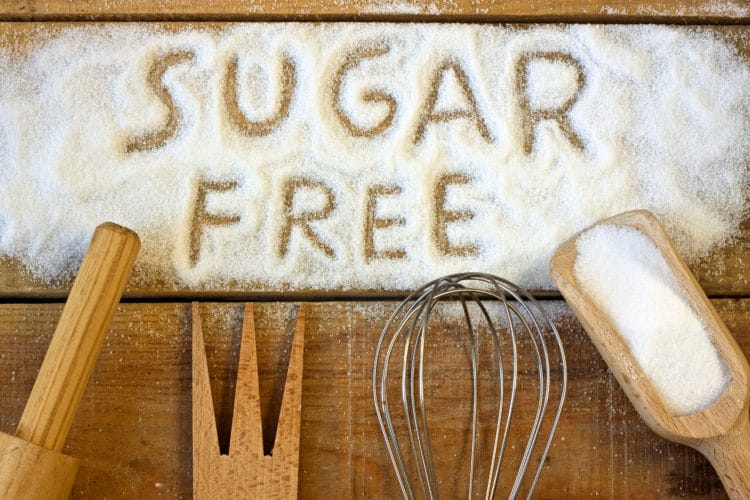Sugar- Free? Are You Sure about That?
Cruising the internet the other day, I ran across a recipe for “Sugar-Free Apple Pie Filling.” I was instantly suspicious. The recipe’s ingredients listed no white sugar, but did include a can of 100% pure unsweetened apple juice concentrate. Apple juice is naturally loaded with sugar. So, the pie recipe was not even close to sugar-free. In fact, the pie filling had more sugar in it than if it had been sweetened with 2/3 cup white sugar instead of the apple juice concentrate.
I’m sure the person who posted the recipe wasn’t trying to be misleading. It’s just that sorting out labels like sugar-free, natural sugar, and added sugars can be a sticky business.
So, without any sugar-coating, here’s a look at what sugars are … and what they’re not.
The Basics
The sugars that we tend to hear about most often include glucose, fructose, sucrose, and lactose. Glucose and fructose are the simplest forms of sugar and are found in equal parts in sucrose (usually consumed as table sugar). Lactose is milk sugar and contains glucose.
Sugar isn’t Fat
All sugars are classified as carbohydrates — a nutrient category that includes starches and fiber. High sugar foods like candy, cakes, pies, and cookies are often labeled fattening which means high in calories. But, fattening should not be confused with fat. Chemically, sugar is not a fat anymore than an orange is a stick of butter.
Some people insist that even though sugar isn’t a fat, it automatically turns to fat once it is inside your body. That’s simply not true. It is true that if you overconsume calories in the form of sugar, you can end up storing those excess calories as fat, but the same thing goes for overconsuming calories from foods that are high in protein, starch, or fat.
What Qualifies as Sugar-Free?
The FDA defines sugar-free as having 0.5 grams sugar or less per serving. Fruits and vegetables naturally contain glucose, fructose, and sucrose. This means that it isn’t possible for a fruit pie filling, like apple, to be sugar-free even if no sweeteners are added. If a standard apple pie were cut into 8 slices, the apples alone would contribute about 8 grams sugar per serving .
Natural Sugars
Natural sugars are found in many forms including honey, brown sugar, raw sugar, molasses, sucrose, fructose, natural maple syrup, and 100% fruit juice. From a nutrition standpoint, there’s no one sugar that’s better than another. Your body doesn’t care that honey was made by bees or that the maple syrup came from a tree. Your body simply reacts to the sugars that are present.
Added Sugars
When any sugars are added to a food, even when they are natural sugars, they are counted as added sugars because they have been put in a food to enhance sweetness. Nutrition experts recommend limiting added sugar intake to 6 teaspoons a day for women and 9 teaspoons a day for men. An excellent way to do this is to choose low or no-calorie sweeteners. These sweeteners are not only sugar-free, but can be used for everything from sweetening beverages to baking.
 Ellen Stokes, MS, RD, LD is an award-winning video producer, director, and writer in addition to being a registered dietitian. Ellen writes and creates videos about nutrition education, food safety, menu planning, grocery shopping, and healthful cooking on a budget. Ellen has worked with organizations and companies including WebMD, the Partnership for Food Safety Education, and the University of Georgia Food Science Department. Ellen formerly worked for CNN as a writer and producer and teaches food safety and nutrition for Georgia State University. Check her out on Twitter @EllenS_RD.
Ellen Stokes, MS, RD, LD is an award-winning video producer, director, and writer in addition to being a registered dietitian. Ellen writes and creates videos about nutrition education, food safety, menu planning, grocery shopping, and healthful cooking on a budget. Ellen has worked with organizations and companies including WebMD, the Partnership for Food Safety Education, and the University of Georgia Food Science Department. Ellen formerly worked for CNN as a writer and producer and teaches food safety and nutrition for Georgia State University. Check her out on Twitter @EllenS_RD.

